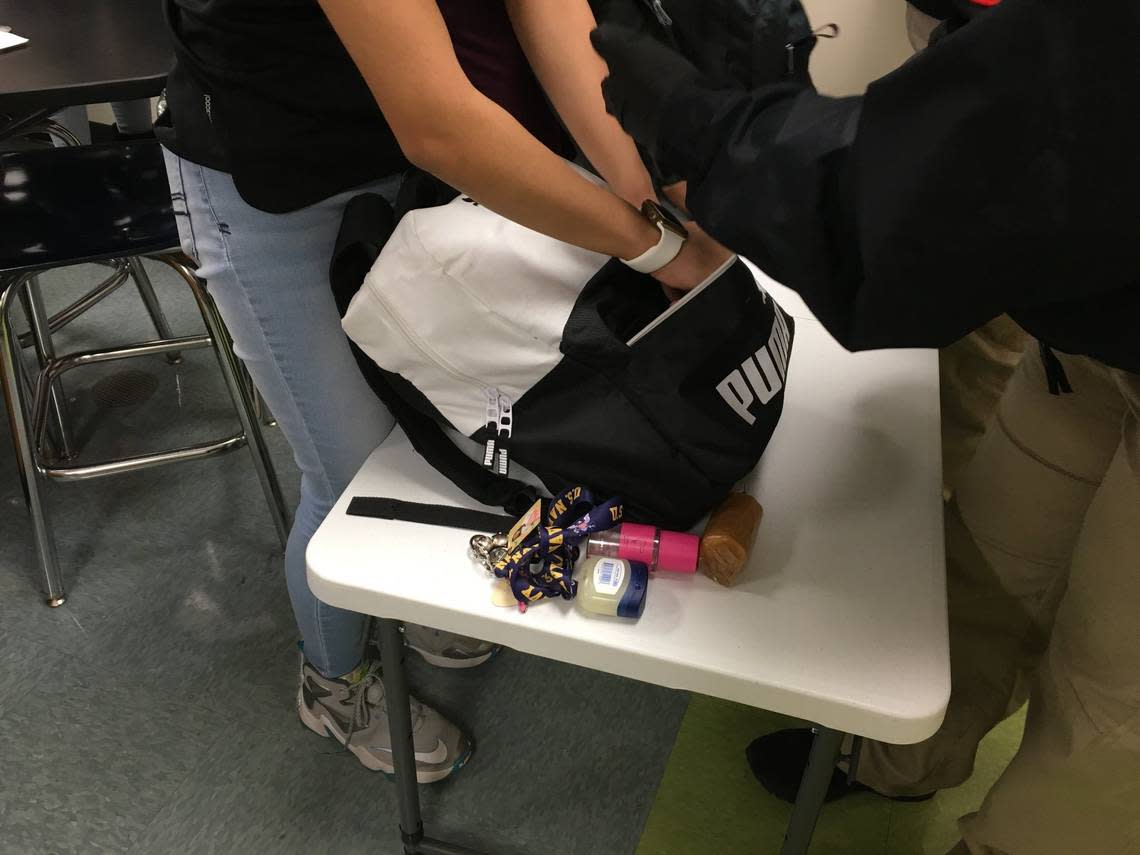Crimes, guns, suspensions and dropouts soar in NC public schools after the pandemic
School crimes, particularly gun offenses, and student suspensions have soared above pre-pandemic levels in North Carolina’s public schools.
The total number of reportable school crimes in the 2021-22 school year was 11,170 — 16,9% more than before the pandemic in the 2018-19 school year. Possession of firearms or a powerful explosive rose to 161 in the past school year — 30% more than the 2018-19 school year.
The number of short-term suspensions also rose 7% compared to the 2018-19 school year. The number of long-term suspensions, which are for 10 or more days, rose 18% compared to the 2018-19 school year.
The number of dropouts was 17% higher than before the pandemic in the 2018-19 school year.
“We know that the pandemic and its aftermath have created significant challenges for students, educators and their schools,” State Superintendent Catherine Truitt said in a news release Wednesday. “We’re taking aggressive steps to respond this year, and we’re seeking more resources for next year to provide students with the help that they need.”
As an example, Truitt pointed to $74.1 million in School Safety Grants that the N.C. Center for Safer Schools awarded this past fall to 200 school districts and charter schools. It’s being used for things such as hiring more school resource officers and purchasing new school visitor management systems.

Gun incidents rise
The new school gun figures come after at least 13 guns were found in February in North Carolina public schools, including two in Wake County. Official figures for this school year aren’t expected to be released until early next year.
For last school year, Charlotte-Mecklenburg had the most possession of a firearm incidents in the state with 29, compared to eight in Wake County. The discovery of a single firearm can result in multiple cases being reported if more than one student is charged.
But CMS says only three guns have been found in schools this year, which the district attributes to weapons detectors being installed in middle schools and high schools.
Several other statewide school crime stats also soared compared to the 2018-19 school year. Possession of a weapon other than a firearm was up 60% and possession of controlled substances was up 14%.
Go to https://bit.ly/41De32E to view school and district data.
Nationwide trend
Truitt said the North Carolina figures are a reflection of a nationwide trend. The state Department of Public Instruction pointed to how national survey data from schools last year showed that many students struggled to readjust to school culture and expectations, resulting in more misbehavior and violations of school rules and laws.
Crime, suspensions and dropout figures shouldn’t be compared to the 2019-20 and 2020-21 school years, when the pandemic limited how many days students received of in -person learning.
The number of crimes and suspensions were sharply down both school years.
School crime rates had been falling before the pandemic.
The new crime and discipline figures were presented at Wednesday’s State Board of Education meeting. State board member Amy White said the key to improving student behavior is to improve academic performance.
“What happens to students in the middle and high school grades exponentially increase because you have students who, because they are not focused and they are not engaged in the classroom, they find other things to do,” White said. “And those other things to do often land them in front of an administrator.”
Racial disparities in data
Concerns were raised Wednesday about racial disparities in the data, particularly involving who is being suspended.
Consistent with state and nationwide pre-pandemic trends, racial minorities, low-income students and males were more likely to be suspended or placed in alternative schools for disciplinary reasons.
For instance, Black students are suspended at much higher rates than white students.
State board member James Ford said he’s “incensed” and “nauseous” at the racial disparities in the discipline data. He said it’s a problem that some people don’t think that all children misbehave at a similar rate.
“I grow tired of seeing the same thing over and over again,” Ford said. “I don’t feel a sense of urgency, just in general, around the true robbery of educational rights that is taking place here.”
Karen Fairley, executive director of the Center For Safer Schools, presented recommendations on Wednesday to address the safety and discipline concerns, including:
▪ Recognize cultural differences in students served.
▪ Employ a social worker at each school (elementary, middle and high) to focus on prevention, intervention and referral.
▪ Employ qualified professionals to offer cultural awareness training to school staff and employees.
▪ Ensure that school resource officers are engaged in positive interactions with students, not just classroom behavior management and situations of arrest or other punitive measures.
“Our schools need to be safe and supportive for all students, and that requires engagement of everyone in schools: students, parents, educators and support staff,” Fairley said in a news release.
